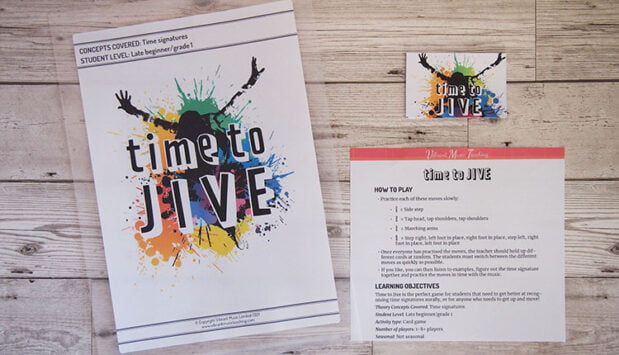Teaching group piano lessons is an exciting prospect. You can teach more students at once and you get to explore the benefits of having a social environment in your studio.
But there are a few mistakes I see again and again from new group piano teachers.

⬆️ Listen to the podcast above or keep on reading, whichever fits your style. ↙️
These top 3 mistakes are things I’ve experienced as a preschool group and buddy lesson teacher, and things I’ve seen secondhand through my work supporting other teachers in our Vibrant Music Teaching membership.
Let’s explore some of the most common whoopsies made when teaching group music lessons so you can avoid them in your own studio.
Mistake 1: Not Crunching the Numbers Correctly
Many teachers get into group piano teaching because they want to make more money in less time. Totally fair and understandable.
But whether or not that’s your motivation, you’d better make sure you do make more money from teaching your group music lessons than your solo lessons.
Because they’re going to take you more time to plan. Especially in the beginning.
I recommend setting a minimum student number for your group lessons, then setting your rate as about 2x your regular one-on-one rate (or 1.5x as an absolute minimum.)
Don’t worry if maths isn’t your bestie; we have a calculator to help you figure it all out.
If you need more help planning your group music lessons, you’ll love the resources at our hub page devoted entirely to Planning Lessons.
Mistake 2: Not Taking Advantage of the Group Format
No matter what your primary motivation for starting to teach groups is, I hope you’re getting excited about the possibilities!
Groups have so many benefits and it would be a huge mistake not to take advantage of all of the things you can do once you have several students together in a lesson.
Play Games
This advice from me might go without saying by now…but I’ll say it anyway. 😜
Playing games is one of the best ways for children (and grown-up children) to learn. Put games at the core of how you teach music theory concepts and your group lessons will be both fun and effective.
Sing
I used to avoid singing in my lessons. I was honestly too shy/embarrassed/self-conscious.
Then I realised that I just had to get over myself.
Because if I was reluctant to sing, my students were going to pick up on that. And if they absorbed it, which they probably would, I was passing on a terrible attitude to the voice. It’s our built-in instrument. It can do so much for our musicianship, even if ours isn’t the most beautiful singing voice in the class.
The advantage of singing in groups is that your students who feel like I used to – the reluctant singers – can whisper. They will still get to take in the experience, and they won’t feel as “on show” with the more confident singers as their support.
Move
Movement is one of the most natural ways to understand music. That’s why so many of us love to dance! 💃🏽
Even if you have a smallish teaching space, you can still get your groups to march around and learn on-the-spot dance steps to reinforce the rhythms they’re learning. You can also play clapping games to make learning the words to a song or listening to a piece of music more interactive.
If you’re looking for a place to start, Time to Jive is a great game which uses movement to help students internalise the “feel” of different time signatures. And as an added bonus, it will wake up even the most tired of your late beginners!
Still not a member of Vibrant Music Teaching? What are you waiting for?! Time to Jive is just one of hundreds of resources available to members in an instant, day or night. Check out the membership today!
Mistake 3: Going at the Slowest Student’s Pace
Now we get to the biggest question I hear from all new and potential group teachers: What happens if one student moves more quickly than the other?
I’m afraid I’m going to do that irritating thing where I answer a question with another question:
Have you EVER had two students who moved at exactly the same pace?
Didn’t think so.
Then this is not an if question, it’s a when question. And the answer, I believe, is that you veer towards the faster lane.
If you have one child who is outstripping the others by miles, then that’s a different story. But if one is a little better at reading and the other a bit quicker with rote pieces, you should build in layers so that the slower student can still participate but the faster student is never left bored.
What group piano teaching mistakes have you made?
I’d love to hear your thoughts on this in the comments below. 🙂


Thanks for this useful advice! I’ll be starting teaching beginners ages 7 and up this summer and into the fall, and I promise I won’t fall into any of these 3 traps! 🙂